Alumni Park Rangers Return to CSUN to Celebrate National Parks Centennial
Their “offices” are located among the mountains of coastal California, the towering sequoias of the Sierra Nevadas, the cliff dwellings of Colorado’s ancient native tribes and the historic ranchland of Montana. Four alumni of California State University, Northridge returned to their urban alma mater this month to help celebrate the National Park Service’s centennial and to encourage current students to follow them into careers at the national parks.
The four panelists — most of them recent alumni — shared their stories, career advice and experiences coping with issues such as park overcrowding and diversity recruiting at an Oct. 5 town hall program, The National Parks: America’s Best Idea. The event took place in Johnson Auditorium at CSUN’s Jacaranda Hall and was supported by the CSUN Distinguished Visiting Speakers Program and the Center for Recreation and Tourism.
Cliff Spencer ’84 (Recreation and Leisure Studies), superintendent of Mesa Verde National Park and Yucca House National Monument in southwestern Colorado, returned to CSUN for the first time in 28 years to participate in the event.
“The big thing I wanted to get across to the students was that you don’t necessarily have to be a recreation and tourism management major to have a career in the park service,” Spencer said after the program. He has worked at eight different national parks, from Shenandoah National Park in Virginia to Point Reyes National Seashore in Northern California (where Spencer and his wife were married). “We have everything from anthropologists to engineers. We have a lot of opportunities.”
After earning his associate degree in psychology at Los Angeles Pierce College, Spencer switched his major to recreation and leisure studies at CSUN, where the late professor Jack Foley encouraged him to apply for a co-op program at the nearby Santa Monica Mountains National Recreation Area. Spencer worked there while earning college credit, kicking off a distinguished career with the National Park Service (NPS).
Thirty years later, Spencer presides over the nation’s largest archaeological preserve — as superintendent of Mesa Verde and Yucca House, a position he’s held since 2010. He also supervises the superintendent of Chaco Culture National Historical Park and Aztec Ruins National Monument, in northwestern New Mexico. As superintendent, Spencer said, his job is similar to that of a city manager.
Several decades later, Razsa Cruz ’13 (Geography) found her own career launch pad at Santa Monica Mountains, where she started as an intern and now works as a park ranger.
“I’m from Blythe, California, where it gets to be 120 degrees in the summer,” Cruz said. “It’s a really small town, and I never thought I’d leave there.”
She graduated from high school in 2004 with dreams of becoming a film director. Cruz moved to Ventura to attend film school, but eventually dropped out — intimidated by the competition.
“I felt like a failure,” she said. “I had no idea what I wanted to do.”
She moved back in with her parents in Blythe, where her dad issued an ultimatum, Cruz said: Get a job or go back to school. She chose community college.
“I grew up on a ranch, and I always helped out with our horses, our cows, our roosters,” she said. “I really loved nature, but I had no idea this was out there — that parks existed for me.”
Her geography professor at community college encouraged Cruz to join a national parks recruiting program for diverse students, which included a free trip to the Grand Canyon. She returned home inspired. Later, as a CSUN student, she worked with an NPS mentor and started an internship at Santa Monica Mountains in 2008.
“It is an urban island — it’s the largest urban park in the United States,” she said. “What drew me closer to this park was the indigenous roots that we don’t talk about often. I now work at and manage the Satwiwa Native American Indian Culture Center (in Newbury Park), where I bring in indigenous cultures from across the country to present cultural programs to the public for free.
“What I get out of it, and I hope the families that come through do too, is they realize we’re all alike,” she said. “It doesn’t matter what walk of life we come from — we are all intertwined.”
Mike Theune ’11 (M.S., Recreation and Tourism Management) also got his start in the national parks through an internship at Santa Monica Mountains. He later worked as a park ranger at Hawai’i Volcanoes National Park, Cape Hatteras National Seashore and then returned to Santa Monica Mountains. After earning his master’s at CSUN, Theune worked at Chippewa National Forest in Minnesota before taking on his current position — fire information officer for Sequoia and Kings Canyon National Parks.
“Sequoia has one of the most complex fire programs in the U.S.,” said Theune, who studied geology as an undergraduate. “Giant sequoias need fire to survive, so we actually put fire on the ground (called a “prescribed fire” program). We have our own park helicopter, fire department, wildland firefighting. Our park is 97 percent wilderness.”
With his fellow Matadors and panelists, Theune answered students’ questions on topics such as transportation and parking crunches, government funding of infrastructure upgrades, and climate change.
“One of the things I’ve learned over the years is how important it is to have conversations with people, to really take the time to talk with them,” he said. “The best memories I’ve had with the NPS are those conversations I’ve had with visitors.”
Bethany Szczepanski ’16 (M.S., Recreation and Tourism Management), the most recent alumna on the panel, talked about her internship and graduate project — also at Santa Monica Mountains — and how it gave her the skills to apply for her new job as education technician at Grant-Kohrs Ranch National Historic Site in Deer Lodge, Mont. The historic site — still a working ranch — offers visitors opportunities to experience the frontier cattle era and cowboy life, she said.
“When I was a child, my family traveled a lot and visited many national parks,” Szczepanski said. “These parks represent family, culture, heritage and history for me. Because of this, I wanted to be a park ranger.”
Spencer said he loved his homecoming visit and marveled at the growth of the CSUN campus.
“The first time I visited since before the [1994] earthquake was yesterday,” he told the audience. “The first thing that struck me was that three-dimensional CSUN sculpture at the corner of Nordhoff and Zelzah. There used to be an orange grove behind it, about 20 acres of oranges. [There was] nothing there. Just seeing how many buildings are around and how much the campus has grown is pretty surprising and very impressive.
“Back in those days, tuition was only $79 a semester,” he said, drawing laughter from the crowd. “I paid it on my own.”

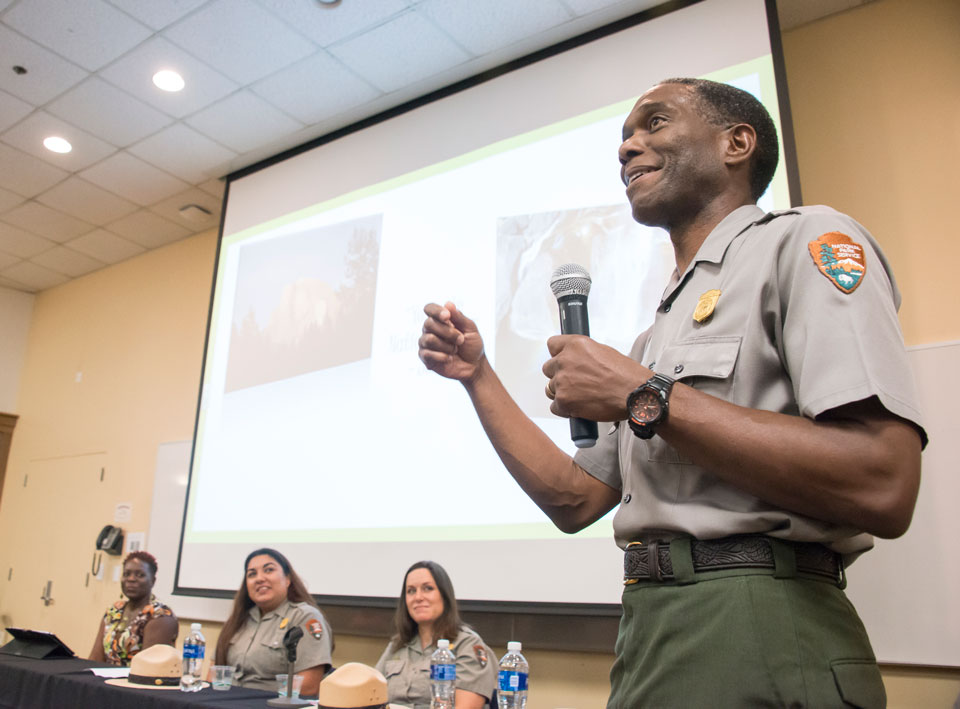
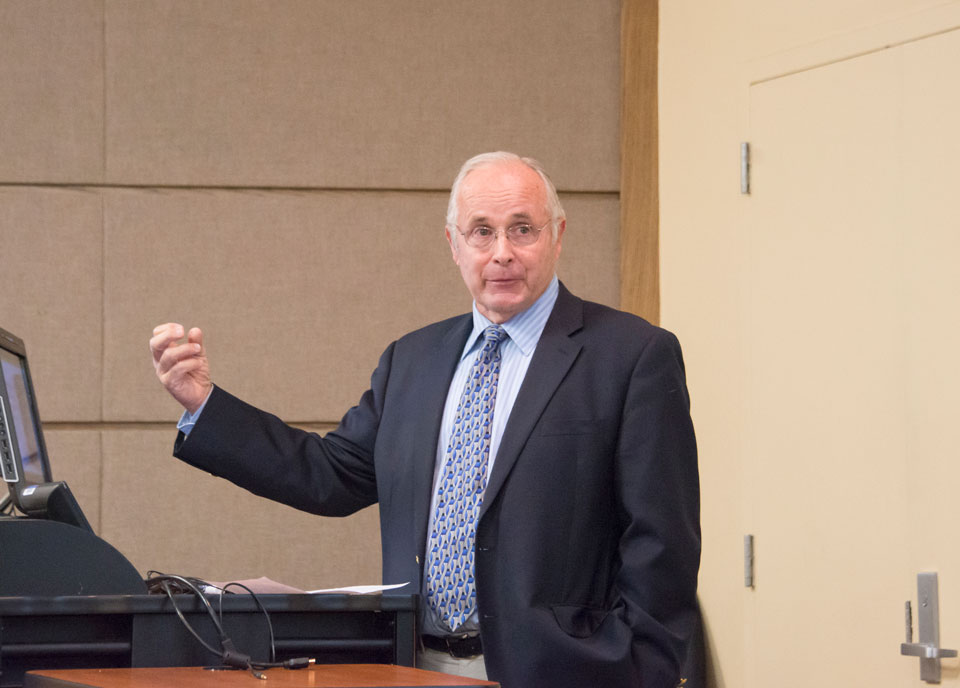
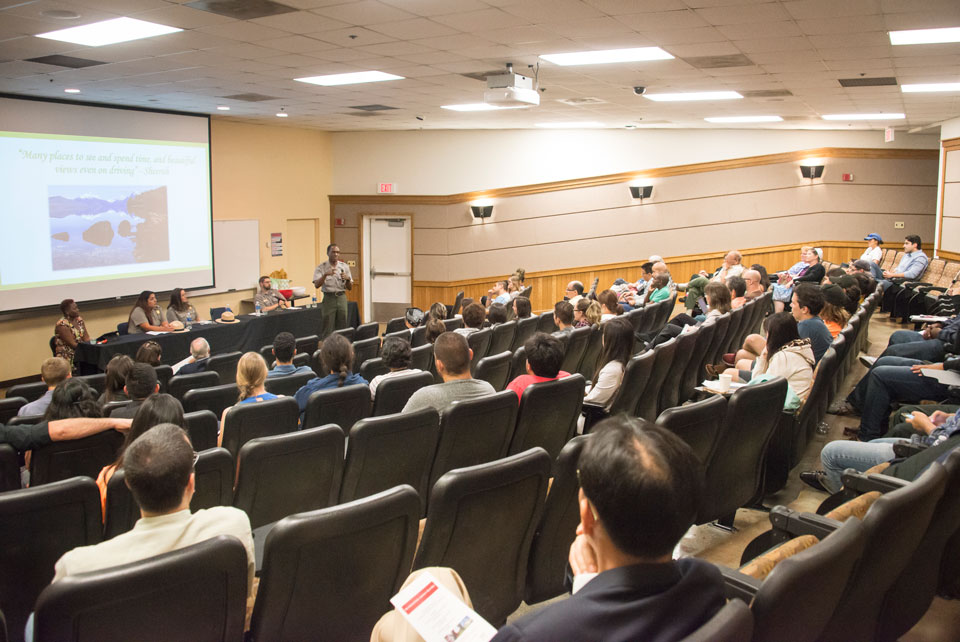
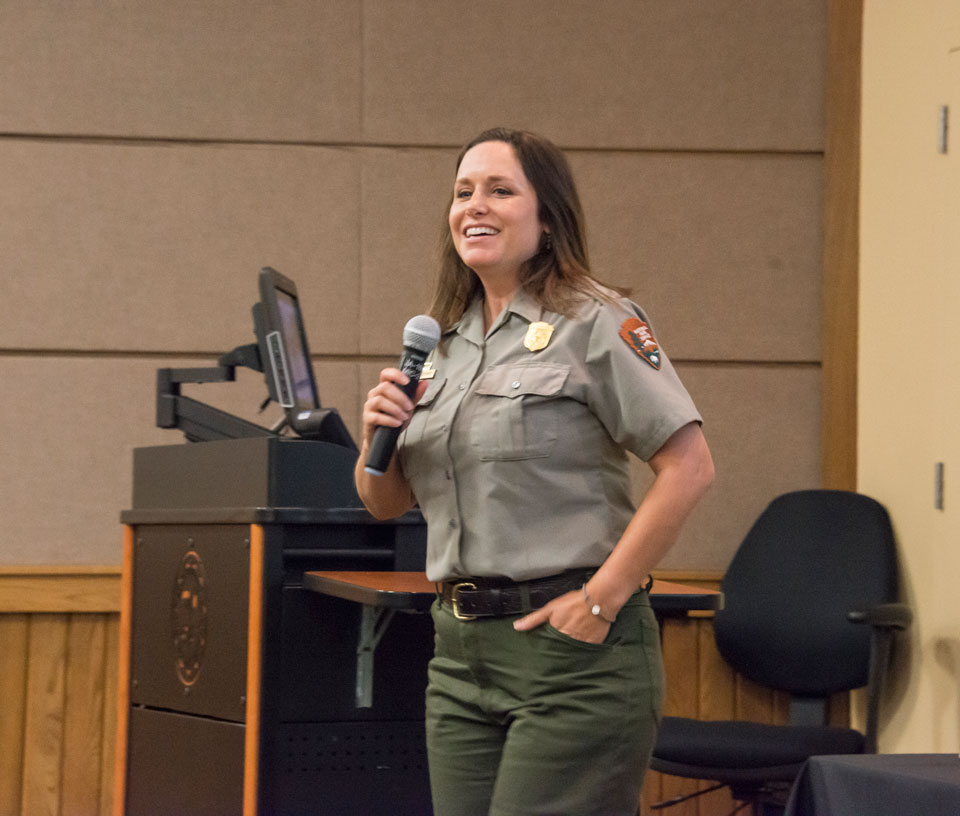
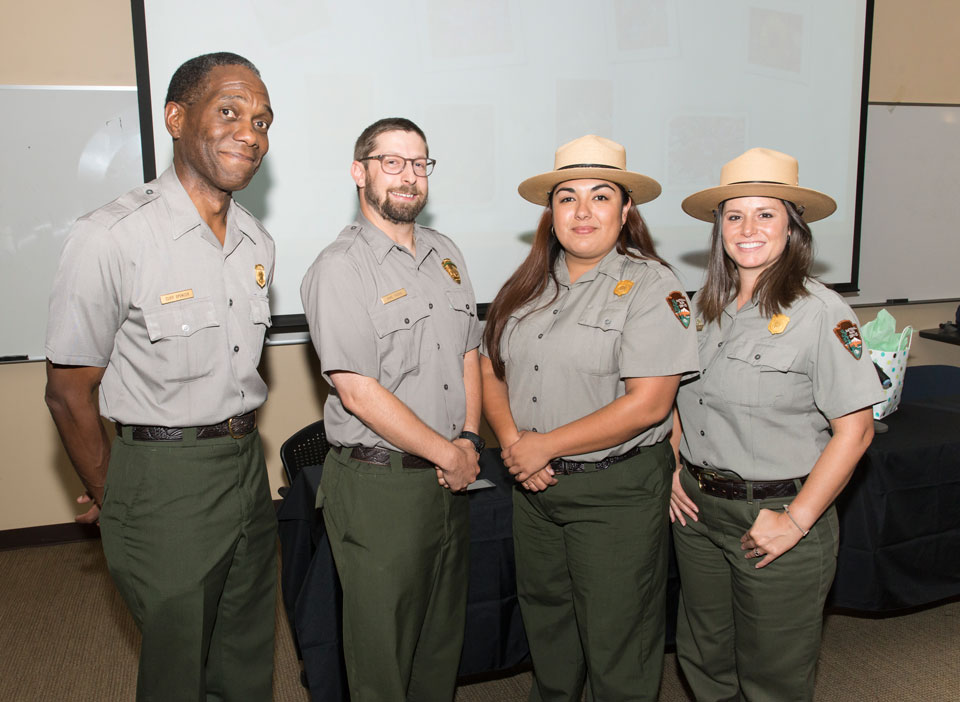
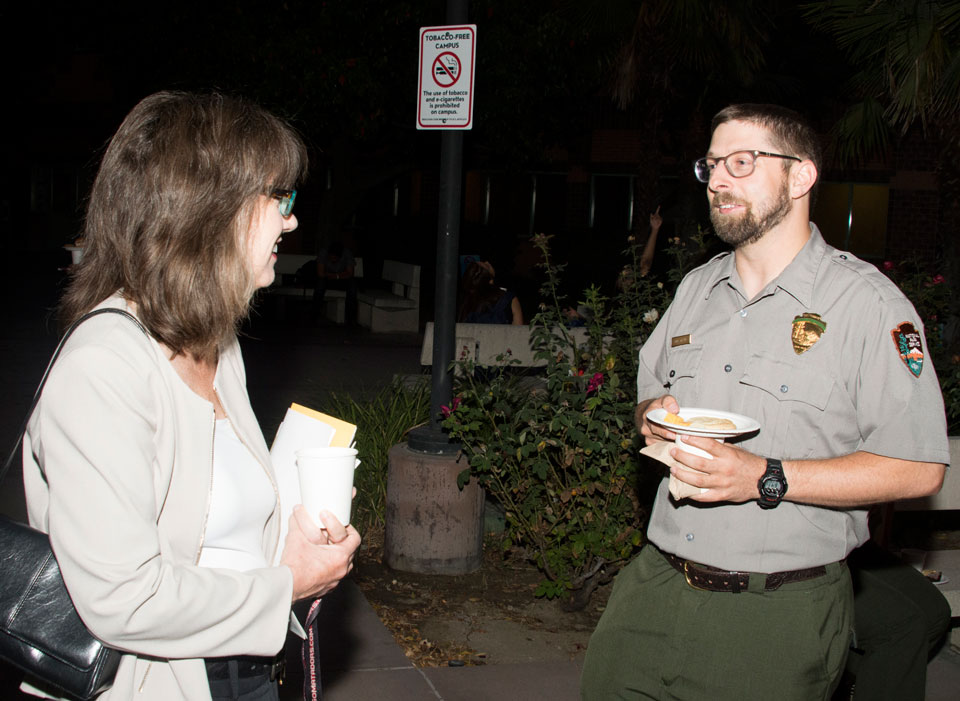

 experience
experience